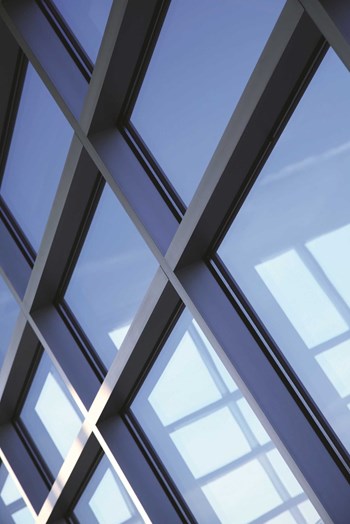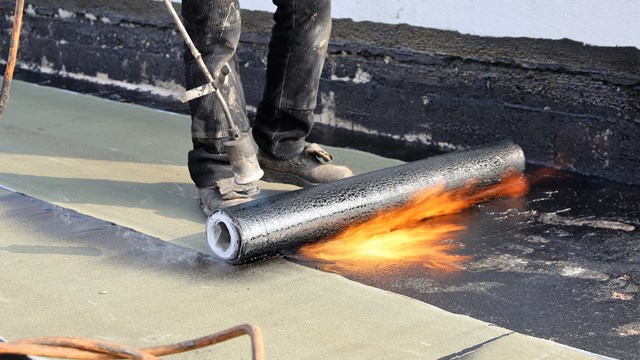
Windows can transform any space. They can turn a tiny kitchen into a front row seat to a glorious sunset; or make an upstairs bedroom a perfect perch for an ocean view. Windows bring both life and light to a home, meaning a great deal of time, effort, and creativity is invested in finding the right ones for our needs.
Windows have to do a lot more than just look pretty. In this part of the country, with its frigid temperatures and vulnerability to snow and rain storms, finding the right windows is about “finding the balance between safety, high winds and the effective incorporation of energy efficiency,” says Doug Anderson residential project manager for the ENERGY STAR Window, Door and Skylight Program, part of the United States Environmental Protection Agency (EPA).
Michael Nau, senior design engineer for PGT Industries, Inc., one of the nation’s leading manufacturers and suppliers of residential impact-resistant windows and doors, agrees. “Thermal resistance is the primary goal in colder climates,” Nau says. “We spend significant effort focusing on reinforcing materials to increase our products’ strength and ability to withstand high wind pressures.”
The Evolution of Window Technology
Over the last half-century, windows have undergone dramatic changes, improving their functionality as well as form for consumers and the developers of residential buildings and communities.
According to PGT Industries, two of the biggest innovations are the use of extruded aluminum for window frames and the creation of impact-resistant glass. The development of extruded aluminum came about in the 1960s for use in residential properties, providing durability, corrosion-resistance and increased frame strength. In the ‘90s, the industry began using aluminum and laminated glass to develop storm-resistant window products. This protection ensured the safety of homeowners on a continuous basis without necessitating the installation of shutters to protect from high winds or a snow storm and provide a higher level of sound reduction, as well, according to PGT.
The 1990s also saw the addition of low-emissive or “low-E” coatings to glass, says Kerry Haglund of the Efficiency Window Collaborative based in Wyoming, Minnesota. “The solar resistance of low-E coatings can be manipulated to include specific parts of the visible and infrared spectrum,” he says. “Therefore, a glazing material can be designed to optimize energy flows for heating, cooling or day lighting, whatever is needed for a specific climate.”
Over the last decade, low-E technology has continued to evolve and today, dynamic glass is a new but related product growing in popularity. According to PGT, dynamic glass can provide maximum sun protection, allowing glass to transition from clear to nearly opaque, blocking hot ultraviolet rays of the sun.
Additionally, PGT claims, frames for windows have changed in recent years with the ability to achieve performance levels in vinyl-framed products equal to those found in many aluminum products. Vinyl-frame windows and doors are popular nationwide due to their energy efficiency in colder climates.
Finding the Right Window
For individual homeowners or communities as a whole, windows can be an exceptionally large investment. If that investment is made properly with the right consideration of needs and available technology, though, those windows will last a long time and will help reduce utility expenses at the same time.
Haglund suggests that managers or boards preparing to embark on a window replacement project be prepared with a full list of questions and considerations. “Associations should contact manufacturers, give detailed information of what they are looking for and ask for information such as, what are the annual energy costs?” he says. “What is the peak electric demand? What is the return on investment? Does it require full replacement or sash replacement? Does it meet local energy code? What is the replacement schedule and how disruptive will it be to the association?”
The answers to those questions may require simulations and estimates, but they offer a good place to start, especially if the project seems overwhelming.
Fortunately, the federal government’s ENERGY STAR program provides a number of guidelines to help guide the purchase of energy efficient windows. New guidelines were announced this past January.
For the best energy efficiency, ENERGY STAR recommends windows with a low solar heat gain coefficient. “The lower the number, the more resistant it is to letting heat through,” says Anderson. “That lowers the air conditioning costs.”
Also, a low U-factor is also important, indicating how well the window insulates. This number ranges from .25 to 1.25, and again, the closer it is to the lower end of the range, the better for the consumer.
Visible transmittance—or VT— also factors into a good, energy efficient window, as well. This measures the amount of light the window lets through. The higher the number, the greater the amount of light residents will see entering their homes. This might contribute to more heat entering the rooms.
“Great big buildings have a different code,” says Anderson. “Windows that are higher up need to be wind-resistant.” That is to compensate for the general buffeting that occurs with tall structures and persistent, high winds that will occasionally make a building sway and flex.
With so much information to absorb and analyze, the hiring of a professional consultant could be a prudent course of action. According to PGT Industries, most of this research is best left to a local, licensed engineer as they can help in selecting a reputable window company and dealer.
On the Horizon
New technologies are on the horizon that will make windows an even more exciting aspect of home and residential building design. Haglund says to watch for the development of vacuum-insulated glazing systems and dynamic systems, such as electrochromics, which require low-voltage electricity, and thermochromics, which react to the heat of the sun. These are already on the market but “are quickly being integrated with other daylighting strategies, such as lighting controls and automated shading,” Haglund says. “These typically were for commercial applications but are starting to move into the residential market.”
Nau agrees that dynamic glazing is becoming a major development in glass design. Because it will “darken either manually by flipping a switch or automatically in response to the intensity of sun rays, glazing will offer significant advances in thermal efficiency.”
Nau cites two other developments on the horizon that should appeal to consumers. “We are most excited about the development of multiple frame coating technologies for vinyl products,” he says. “This will give homeowners a whole new level of flexibility in frame color and finishes. We also now have the ability to combine multiple materials in one window frame to provide increased benefits to homeowners with regard to strength, durability, energy efficiency and aesthetic appeal.”
Ultimately, Anderson says, “you want beautiful windows that will keep people comfortable and safe.”
With the right combination of energy efficiency, strength, framing and design, the windows of today and tomorrow offer a broad range of options for residents as well as the designers and developers planning and constructing the next generation of New Jersey’s homes and residential buildings.
Liz Lent is a freelance writer and a frequent contributor to The New Jersey Cooperator. Staff writer Christy Smith-Sloman contributed to this article.






Leave a Comment